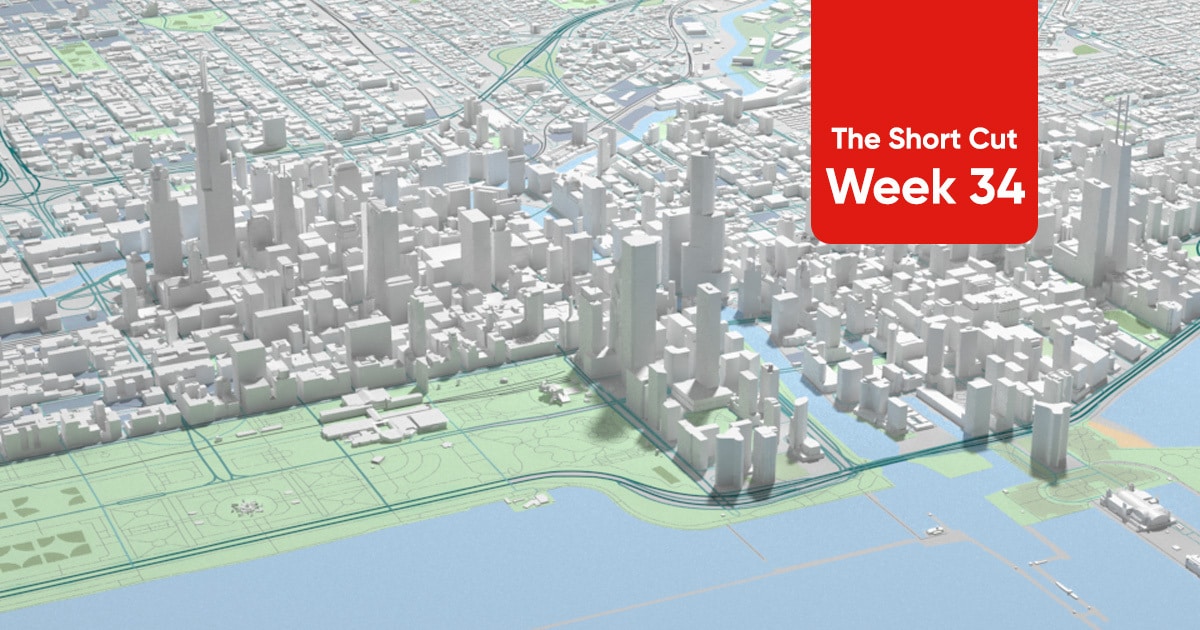
Stop scrolling through long lists, our five must-read stories of the week are here. This week, we discover how AI revolutionizes underground mapping, the huge value of aerial imagery in mapping, a map unveiling the mysteries of the universe and more. Ready? Let's dive in!
Happy birthday, OpenStreetMap!
OpenStreetMap (OSM) celebrated its 19th birthday on August 9th and launched an online fundraising campaign to support its future success as it approaches its 20th anniversary.
Currently, OSM stands as the largest open-source geospatial project, with mapping communities spread all over the world collaborating on hundreds of communication channels, in more than 50 languages. Since its creation in 2004, the project has grown rapidly and gained widespread media coverage and recognition while achieving new milestones every year. Congrats OSM! Here’s to another 19 years and more!
Aerial imagery reveals historic archaeology
A new report by Historic England, a public organization for historic environment preservation in England, has revealed hundreds of archaeological sites in the South Downs, UK, from the Neolithic period to the Second World War by mapping with aerial imagery.
An interactive map accompanies the report. It’s designed to encourage people to notify the current appearance or condition of terrain modifications by adding data to the map. Both initiatives are part of a wider National Trust-led project focused on the South Downs National Park.
Matthew Oakey, aerial survey principal at Historic England, emphasizes the importance of adding information to the map and believes that this action could result in a long-lasting legacy of archaeological investigation of the Downs, as reported by the BBC. This is a great example of how collaborative mapmaking can contribute to a better understanding of the world.
Underground mapping with AI
A global construction firm and French gas distributor are joining forces in an attempt to enhance underground utility mapping with a special imaging platform they call Exodigo, Construction Digital Magazine reports.
Exodigo uses AI and multiple sensors to create 3D maps that identify obstacles underground such as pipes, cables or rocks. Results as of June 2023 indicated a 57% increase in the identification of utility lines compared to previous records. The goal of this alliance is to reduce the risk of damaging underground utility lines during construction works, allowing both VINCI Construction and GRDF to confidently plan, design, and construct while prioritizing safety.Mapping to infinity… and beyond!
Euclid, Europe's new space telescope, has delivered the first test images of deep space, TheNextWeb reports. The telescope, launched in July, has almost arrived at its destination 1.5 million km from Earth, where it will spend six years mapping the night sky in 3D.
Euclid's mission is to explore the composition and evolution of the dark Universe by observing billions of galaxies across vast distances and create a map of the large-scale structure of the Universe. If successful, it'll help researchers understand the universe's cosmic expansion, and reveal more about gravity, dark energy and dark matter.
Although these first images are quite impressive, the European Space Agency (ESA) states these are only used to check everything is working correctly, but more detailed images will arrive at a later time. How extensive is the world of maps!Maps and images reveal Hawaii fires devastation
Wildfires have impacted Maui, Hawaii, causing extensive devastation to Lahaina town. Images and maps of the affected areas are already available, the BBC reports. As Hurricane Dora’s winds intensified the fire, wildfire maps of the area and connectivity tech have helped emergency response teams provide aid.
These wildfires are noted as the most significant natural disasters in the state's history, leaving over 80% of the beach-front town in ruins. Many homes and historic landmarks have been reduced to ashes, and the search for missing individuals continues.Mapping efforts and technology could play a crucial role in mitigating such disasters, not only helping rescue and recovery operations but also offering insights for future prevention strategies.
And that wraps up this week's Short Cut, but don't worry, we'll be back in a few weeks with more cool stories in the world of tech, mobility and location data.People also read
)
How location data can help emergency responders get to incidents quicker and save more lives
)
'Location-informed' could be the next frontier for generative AI
)
TomTom joins the OpenStreetMap Foundation as its first Platinum Member
)
How four TomTom’ers used maps to provide aid after the earthquake in Türkiye and Syria
* Required field. By submitting your contact details to TomTom, you agree that we can contact you about marketing offers, newsletters, or to invite you to webinars and events. We could further personalize the content that you receive via cookies. You can unsubscribe at any time by the link included in our emails. Review our privacy policy. You can also browse our newsletter archive here.
)